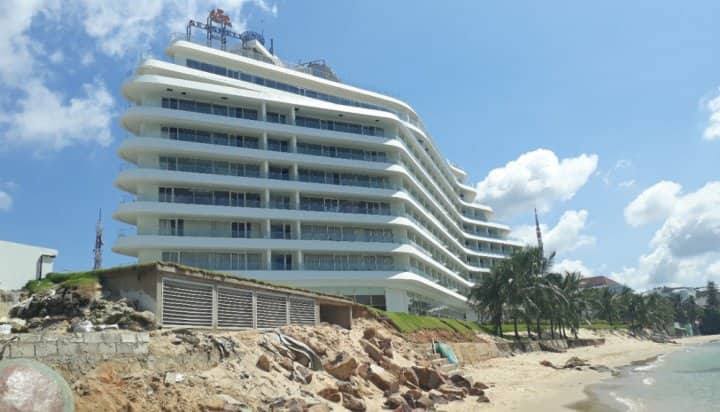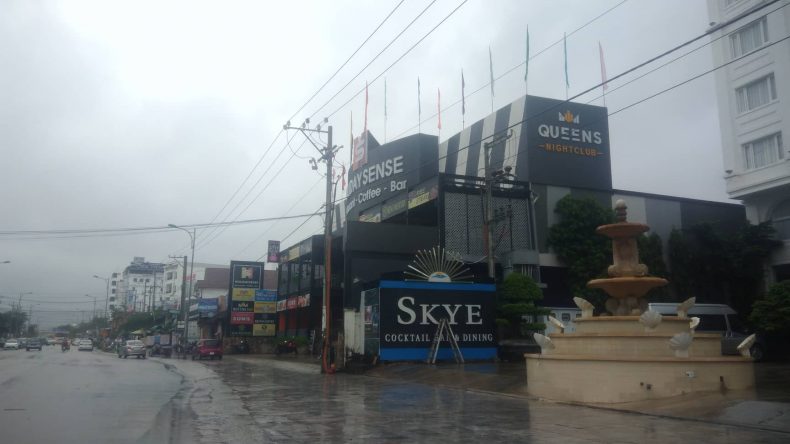The Vietnamese government sees special economic zones (SEZs) as the most important source for future economic growth momentum and breakthrough institutional reforms. Unfortunately, as I analyzed in the first part of this series, the dawn of the Vietnamese SEZs does not appear very bright. There are few weeks left for the Vietnamese public and the National Assembly to debate the SEZ law, which is expected to be approved at the next session. It’s worth reviewing the draft law as well as looking back at the existing economic zones in the country to identify major issues and enduring lessons for the government in its approach to SEZ development – a huge economic gamble that has already been tried and abandoned in the past.
Why SEZs?
After three decades of attracting foreign direct investment (FDI), Vietnam has established 18 coastal economic zones with up to 325 state-supported industrial parks throughout the country. They were designed to offer a wide range of incentives to investors, including tax breaks (or even zero tariffs) on selected items, lower or exempted corporate income tax, and reduced rents and fees. Since the majority of the agricultural land seized for industrialization still remains unused, the existing economic zones still have open space for foreign investors. So why does the government want to introduce more economic zones?
A close look at the domestic context and politics helps explain Hanoi’s determination to develop SEZs.
First, Vietnam’s government is inspired and encouraged by the miracle development of some SEZs in China, the UAE, and Singapore. Second, fresh momentum for domestic economic growth is critical amid global changes prompted by the Fourth Industrial Revolution and new-generation trade agreements. Third, the government and provincial authorities have already offered the most favorable incentives they can, but failed to attract as many high-end manufacturers, new technologies, and modern management know-how as they wish. Meanwhile, possible land and mineral resources for traditional industries are being overexploited, causing more and more negative impacts on environmental and human security.
In addition, many bilateral and multilateral free trade agreements (FTAs) that Vietnam has recently signed, such as the Vietnam-EU FTA and Comprehensive and Progressive Trans-Pacific Partnership (CPTPP), will come into effect shortly. Those FTAs, among other things, will sharply reduce tax revenues and increase public debts in Vietnam, due to commitments to remove taxes and what some called the “free trade trap.” Thus, setting up new economic enclaves presents a clear alternative to sustain the state coffers. It is estimated by the Ministry of Planning and Investment that the SEZs would bring in over $10 billion each year from tax payments and land-related fees.
Moreover, since Doi Moi, the Communist Party of Vietnam (CPV) acknowledges material productive forces and the coexistence of private capitalists as the driving forces behind economic progress and the necessary prerequisite for the early stage in the traditional Marxist framework of developing socialism. Yet the current socialist-oriented market economy has shortcomings and remains unable to meet greater demands for both “neoliberal socialism” and global integration. Pervasive corruption and high-profile failures of state-owned enterprises (SOEs), which play a decisive role and form the backbone of Vietnam’s socialist economy, highlight the vital need for institutional reforms. Accordingly, the proposed coastal SEZs in Van Don, Bac Van Phong, and Phu Quoc Island, which have clear geostrategic strengths and are rich in natural resources, appear to be the best choices to serve as the government’s “institutional trial incubators” at the moment.

The proliferation of luxury hotels, casinos, and private villas in the proposed SEZs triggered public concern that the SEZ law will most benefit real estate investors and land speculators. Image by Pham Duc Thuan.
SEZs Without Identity: A Bit of a Gamble
Some elites and advocates in Hanoi argue that “developing SEZs are nests for phoenixes to come to lay eggs. If Vietnam builds small nests that fit sparrows, phoenixes won’t come.” But what the SEZs will look like and what investors are defined as “phoenixes” remain unsettled questions in the draft law. Supporters also agree that SEZs must be run with “special political institutions and outstanding policies,” but the draft and the current laws on economic zones look a great deal alike, aside from the 99-year lease term, more generous tax incentives, and casino services.
The stated goals of the SEZ law affirm that the priority thrusts of SEZs include “green, high-tech, and knowledge-based” businesses and industries. However, in reality unrelated or even opposite sectors such as golf courses and resorts, mass tourism, casinos, and assembly work are prominent in the list of approved and encouraged businesses and industries. The current draft law, if not revised, appears to most favor real estate investors and land speculators, who have already dominated in the three SEZs, and corporate tax-dodging practitioners.
More challenging is that the compilers of the SEZ law did not display any breakthrough ideas that go beyond the designs of similar SEZs in 13 other countries around the world, which Vietnam’s policymakers have studied. As a result, the law fails to shape a distinct identity for the new SEZs in Vietnam. Incentivizing investors may be crucial in bringing the SEZs to life, but incentives-based SEZs prove no longer a successful model in today’s knowledge-driven global economy – in which transparency, integrity, and a healthy business environment appear to outweigh tax and land incentives.
Vietnam is not the only country in Southeast Asia intent on SEZ development. At least three SEZs are being established in Myanmar while Cambodia and Laos are experiencing increased side effects from their respective SEZs, which are turning into Chinese enclaves. Vietnam therefore has an opportunity to rethink and determine which kind of SEZ will get built in the country: Chinese-style SEZs, neocolonialist SEZs, or true knowledge-based SEZs? While choosing between these three won’t be easy for Vietnamese leaders, Hanoi needs to think big — and differently — when it comes to SEZs. Without new ideas, sound policies, and prudent strategies for attracting FDI, the Vietnamese SEZs might not be globally distinctive and competitive investment hotspots.
Does the Existing Economic Zones’ Legacy Have Lessons for Vietnam?
There is no shortage of skeptics of Vietnam’s plan for developing SEZs. Indeed, common criticisms of the SEZ law often include the evocation of national security and territory issues, increased public debt, and debates of the administrative model proposed in the law. The complexity and failures of many SEZs worldwide prove there are substantial risks that the Vietnamese government needs to carefully take into account. Thus, rather than focusing on future prospects, a close look back at the legacy issues posed by the existing economic zones will reveal some valuable lessons for national leaders to scrutinize their current approach to SEZs.
First, Prime Minister Nguyen Xuan Phuc repeatedly stresses that his government wants Vietnam to proactively get involved in the the Fourth Industrial Revolution, but are the proposed SEZs the best places to kickstart the Revolution in Vietnam? The backbone of successful SEZs in China, South Korea, Malaysia, Singapore, and the UAE lies in their geostrategic location, which determines FDI flows. In Vietnam, very few out of the current 325 economic zones are successful thanks their proximity to Hanoi and Ho Chi Minh City. It’s hard to see any logic behind Vietnam’s choice for the news SEZs, all of which are isolated geographically, while both local infrastructure and socioeconomic levels completely remain underdeveloped and inappropriate for hi-tech driven economic activities. Some have even spoken of these locations as “wrong” choices, since the proposed SEZs are in geopolitically sensitive areas: Van Don in the Gulf of Tonkin, where Chinese fishermen dominate; Bac Van Phong on the shores of the South China Sea; and Phu Quoc next to the Chinese-occupied Sihanoukville Special Economic Zone in Cambodia. With decades-long land rent exemptions and visa waiver policies prescribed in the draft law, China definitely stands to benefit most from these SEZs, especially as Vietnam has been a preferred treasure hunting ground for Chinese buyers in recent years.

While awaiting true “phoenixes,” the proposed SEZs in Vietnam are filling up with bars and planned casinos. Image by Ngo Kim Ngan.
Second, there is also no standardized procedure on how to proceed when the SEZs fail to meet their goals. The poor performances of and mismanagement in the majority of Vietnam’s existing economic and industrial zones, topped off by severe environmental degradation and land waste, are no doubt a major setbacks. Worse, they provide highly visible evidence of carelessness in government preparation for FDI projects. The helplessness of provincial governments in the face of those zones’ lack of success demonstrates the lack of risk-mitigation and response policies necessary for any economic gamble.
When it comes to the proposed SEZs, which are estimated to cost Vietnam about $60 billion (approximately one-third of its GDP in 2017), answers to questions about how the Vietnamese people will benefit from the SEZs remain vague. Likewise, there are no clear answers as to how the government plans to cope with increased public debt due to intensive infrastructure and initial investments, social disorder, unfair competition between investors in and outside the SEZs, and corporate inversion and tax-dodging, among other issues. The amount to be spent for the SEZs could go a long way toward modernizing existing economic centers, building new opportunities, new cooperation, and new futures for the left-behind people in the country. The government obviously recognizes these issues, but addressing them at the outset is important to avoid more worrisome political blowback.
Finally, there’s the ultimate question: Will SEZs result in substantial links between economic growth and social development?
Vietnam is on the move and what is occurring in Vietnam’s education system definitely has broad implications for the country’s socioeconomic development. Given the huge social and financial support for education, the recent high-profile exam cheating scandal has sparked public outcry and mistrust over the government-championed successive educational reforms that have wasted billions of U.S. dollars in the past decades. On the other hand, it reflects the inevitable consequence, or dark side, of the existing growth policy that heavily relies upon FDI, export-processing, and labor-intensive industries. Although such a policy has led to some significant progress in the economy, it eventually results in a visible paradox: too many economic zones built but too little space available for Vietnamese graduates who are trained in scientific, technological, engineering, and mathematical (STEM) specializations.
As a result, tens of thousands of STEM degree holders graduate every year only to face very limited job opportunities. Blue-collar jobs dominate in most of the country’s economic zones, where FDI capital flows into Vietnam have mainly been spurred by low-cost labor and big incentives. This type of FDI strategy gives way to the worrying realization that the best education can lead to worse job prospects as unemployment among university graduates appears highest in the country. This was the major driver behind the recent national exam scandal, in which the detected cheaters (including examinees yet to be found) were greedy to raise their scores as high as possible in order to win a seat at one of the few universities with the best employment rates, notably the People’s Security Academy and People’s Police Academy.
With the cheating scandal seen in this light, it’s clear there is a mismatch between education, which is producing a higher skilled laborforce, and the current economic growth pattern, which is creating a wealth of low-end jobs. In other words, there is a trade-off between short-term growth and commitment to sustainable development. Apparently, the Vietnamese government is in dire need of progressive economic performance to sustain socioeconomic development. Given that, sunny assessments of Vietnam’s “achievements” in economic development in the past decades and the continuity of current FDI strategy as framed in the SEZ law must be reconsidered.
Given its rapidly aging population, the next decade is definitely critical for the future of the nation. It’s an opportunity that Vietnam cannot afford to waste.
Nguyen Minh Quang is a lecturer at Can Tho University and co-founder of the Mekong Environment Forum. His research interests include Vietnam politics, Mekong Delta environmental security, and political economy. He is currently a Ph.D. researcher at the International Institute of Social Studies, Erasmus University Rotterdam, The Netherlands.

































